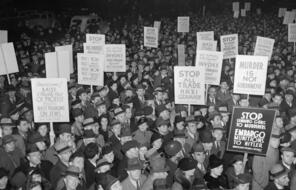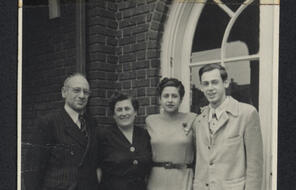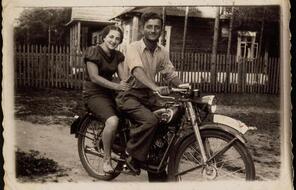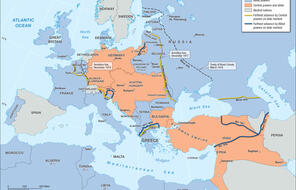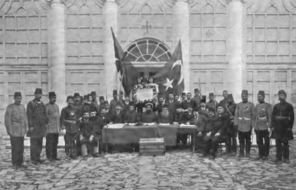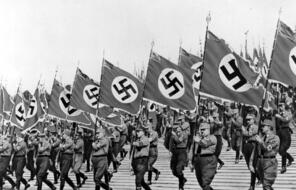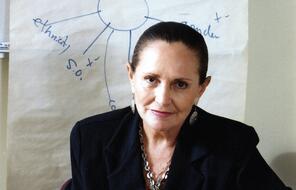Breeding Society’s "Fittest"
Subject
- Civics & Citizenship
- History
- Social Studies
Language
English — USUpdated
Genetics, Eugenics, and Ethics
By the late 1800s, more and more people were looking to science and biology to justify their ideas about who was “in” and who was “out.” They found support for their arguments in a work that seemed unrelated to human societies. In 1859, Charles Darwin, a British naturalist, published On the Origin of Species. It explained how various species of plants and animals physically change over time. Darwin’s work suggested that each species competes for a limited amount of space and nourishment, and only some survive. An individual organism that is well suited to its environment has the best chance of living long enough to mate and produce offspring. Over many generations, the traits that help an organism to survive are passed on, while the traits that create disadvantages die out. As a result, new traits, species, and forms of life gradually develop or evolve. Darwin called this process “natural selection.” Shortly after On the Origin of Species was published, it became a sensation.
Many readers immediately saw connections between Darwin’s theory of evolution and their own society. A number of them were influenced by the writings of Herbert Spencer, a British thinker. Referring to Darwin’s work but using his own phrases such as “the struggle for existence” and “the survival of the fittest,” Spencer helped to popularize a theory known as Social Darwinism.
Nineteenth Century Evolution Chart
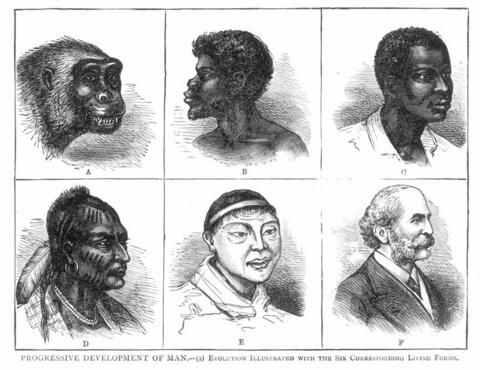
Nineteenth Century Evolution Chart
This late-nineteenth-century chart shows the supposed racial stages of evolution from ape to European that many scientists supported.
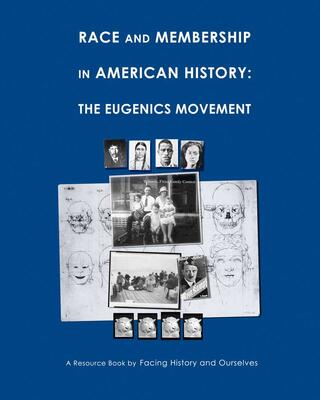
Get the Resource
Go deeper into the history of eugenics in United States with our resource Race and Membership in American History.
Social Darwinists saw their ideas at work everywhere in the world. People who were at the top of the social and economic pyramid were considered society’s fittest. People at the bottom must be “unfit,” they reasoned, because competition rewards “the strong.” Many Social Darwinists therefore questioned the wisdom of extending many rights and privileges, such as the right to vote, to groups who were “less fit.” They argued that if the laws of natural selection were allowed to function freely, everyone would find his or her rightful place in society. Increasingly, that place was based on race.
In Germany, Ernst Haeckel, a biologist, popularized Social Darwinism by combining it with romantic ideas about the German Volk (the people who share German heritage, language, and culture). In a book called The Riddle of the Universe, he divided humankind into races and ranked each of them. In his view, “Aryans”—a mythical race from whom many northern Europeans believed they had descended—were at the top of the rankings and Jews and Africans were at the bottom.
Haeckel was also taken with the idea of eugenics as a way of keeping the “German race” pure. Eugenics is the use of science to improve the human race, both by breeding “society's best with the best” and by preventing “society's worst” from breeding at all. Eugenicists believed that a nation is a biological community that must be protected from “threat,” which they often defined as mixing with other allegedly inferior “races.” The eugenics movement in Germany was founded by Alfred Ploetz, who advocated for “racial hygiene”—the effort to promote not only the health of individuals but that of the “German race” as a whole.
Ploetz and Haeckel were inspired by the work of eugenicists in England and especially the United States. The term eugenics, which literally means “well born,” was coined in England by Francis Galton, a cousin of Darwin, but many of the most prominent eugenicists were Americans. American eugenicists advocated restrictions on marriage and immigration in order to prevent races from mixing. They also lobbied for laws that would permit sterilizing the “socially unfit.” These American laws, passed in the 1920s, became models for similar laws enacted in Germany a decade later.
Scientists who tried to show that there was no “pure” race were ignored. In the late 1800s, the German Anthropological Society, under the leadership of Rudolph Virchow, conducted a study to find out if there really were racial differences between Jewish and “Aryan” children. After studying nearly 7 million students, the society concluded that the two groups were more alike than they were different. Historian George Mosse says of the study:
This survey should have ended controversies about the existence of pure Aryans and Jews. However, it seems to have had surprisingly little impact. The idea of race had been infused with myths, stereotypes, and subjectivities long ago, and a scientific survey could change little. The idea of pure, superior races and the concept of a racial enemy solved too many pressing problems to be easily discarded. The survey itself was unintelligible to the uneducated part of the population. For them, Haeckel’s Riddles of the Universe was a better answer to their problems. 1
Connection Questions
- How did people apply Darwin’s theory of natural selection to human society? What are the connections between “race science,” Social Darwinism, and eugenics?
- According to historian George Mosse, “The idea of pure, superior races and the concept of a racial enemy solved too many pressing problems to be easily discarded.” What “problems” did such ideas of race solve? Are there any problems in our world today that are solved by “us and them” thinking?
- Eugenicists conducted their research at prestigious universities and other respected scientific and medical institutions. They also formed their own organizations, such as the International Congress of Eugenics. What role do institutions play in giving legitimacy to ideas?
- Why did the findings of eugenicists and “race” scientists so often suggest that their own group was superior? What evidence would you use to dispute the ideas and arguments of eugenicists?
- Think of times when prejudice has blinded you or someone you know. How did you react when you recognized the prejudice? How did you feel? How do Mosse’s comments support the view that what people believe to be true is more important than the truth itself?
- 1George Mosse, Toward the Final Solution: A History of European Racism (New York: Fertig, 1978), 92.
How to Cite This Reading
Facing History & Ourselves, “Breeding Society’s "Fittest"”, last updated August 2, 2016.




